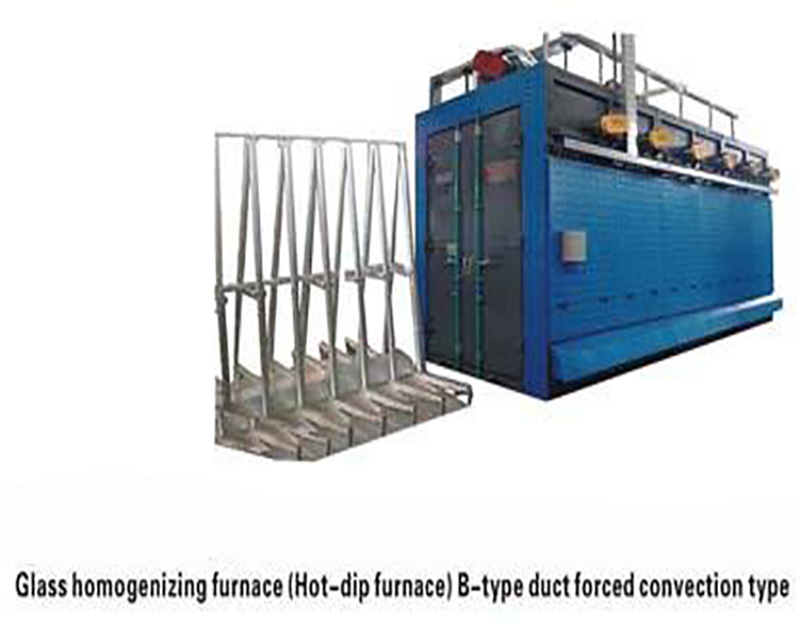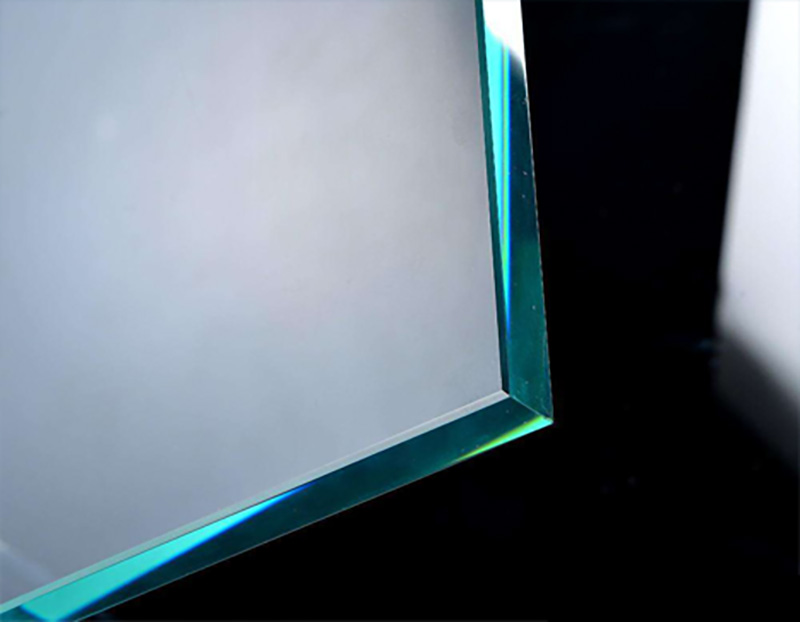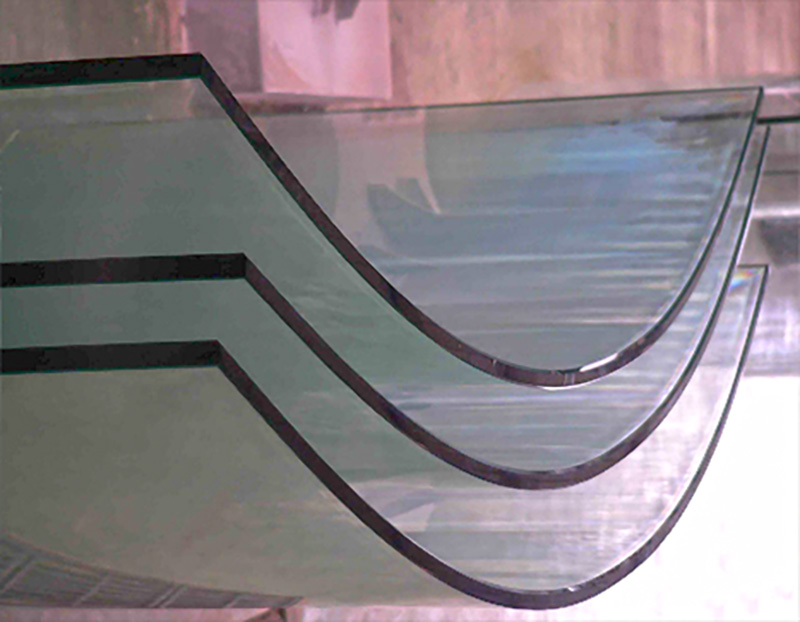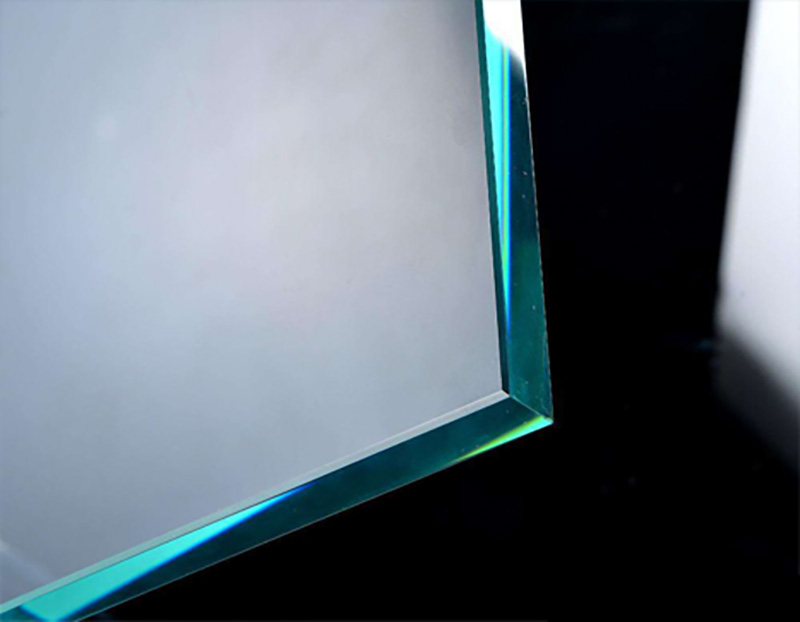Project Description
Description
Tempered glass homogenizing furnace
The tempered glass homogenizing furnace belongs to the testing equipment, and is also called the auxiliary equipment of tempered glass by people in the glass machinery industry. After the completion of the glass tempering, the glass is detonated and the residual nickel sulfide is eliminated. The main purpose is to make the internal stress distribution of the glass uniform, avoid glass self-explosion, and improve the quality of tempering.
The homogenizing furnace is composed of a furnace body, a furnace body cover, a glass carrier vehicle, a wind road system, a heating system, an electric control system, and a pneumatic system.
Homogenization process
01 heating up
The heating phase starts from heating around all the glass until the temperature of the last glass rises to 280°. The heating time is based on the time specified in the calibration process. The time required depends on the volume of the heating box, the number of processed glass, glass and glass. The distance between them and the power of the heating system are determined together. In order to avoid the glass blasting caused by the action of thermal stress, the spacing and heating power of the glass should be controlled as much as possible. In order to promote effective heating, the temperature of the air in the heating chamber may exceed 320°, but the surface of the glass is not allowed to exceed this temperature, and the time during which the surface temperature of the glass exceeds 300° should be minimized.
02 constant temperature
The thermostatic section starts from a temperature of 280° for all processed glass surfaces. The duration of this phase is 2 hours. The heating chamber should be accurately controlled to ensure that the glass surface temperature is maintained at 290 ± 10 degrees in the constant temperature range.
03 cooling
The cooling section is heated from the last piece of glass to 280° and completes the constant temperature section processing standard, that is, after 290±10 degrees for 2 hours, the glass temperature starts to the ambient temperature in the word stage, and the temperature in the heating box is 70°. To complete the cooling. It is worth noting that the heating power should be reasonably controlled to minimize glass blasting due to thermal stress.
Techonlogy
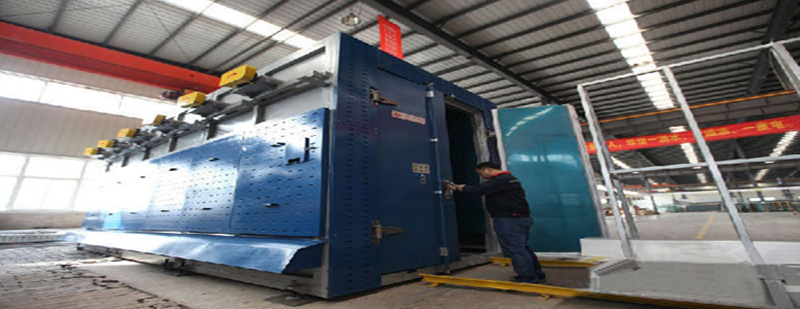
The tempered glass homogenizing furnace belongs to the testing equipment, and is also called the auxiliary equipment of tempered glass by people in the glass machinery industry. After the completion of the glass tempering, the glass is detonated and the residual nickel sulfide is eliminated. The main purpose is to make the internal stress distribution of the glass uniform, avoid glass self-explosion, and improve the quality of tempering.
The homogenizing furnace is composed of a furnace body, a furnace body cover, a glass carrier vehicle, a wind road system, a heating system, an electric control system, and a pneumatic system.
Homogenization process:
01 heating up
The heating phase starts from heating around all the glass until the temperature of the last glass rises to 280°. The heating time is based on the time specified in the calibration process. The time required depends on the volume of the heating box, the number of processed glass, glass and glass. The distance between them and the power of the heating system are determined together. In order to avoid the glass blasting caused by the action of thermal stress, the spacing and heating power of the glass should be controlled as much as possible. In order to promote effective heating, the temperature of the air in the heating chamber may exceed 320°, but the surface of the glass is not allowed to exceed this temperature, and the time during which the surface temperature of the glass exceeds 300° should be minimized.
02 constant temperature
The thermostatic section starts from a temperature of 280° for all processed glass surfaces. The duration of this phase is 2 hours. The heating chamber should be accurately controlled to ensure that the glass surface temperature is maintained at 290 ± 10 degrees in the constant temperature range.
03 cooling
The cooling section is heated from the last piece of glass to 280° and completes the constant temperature section processing standard, that is, after 290±10 degrees for 2 hours, the glass temperature starts to the ambient temperature in the word stage, and the temperature in the heating box is 70°. To complete the cooling. It is worth noting that the heating power should be reasonably controlled to minimize glass blasting due to thermal stress.
Tempered Glass






